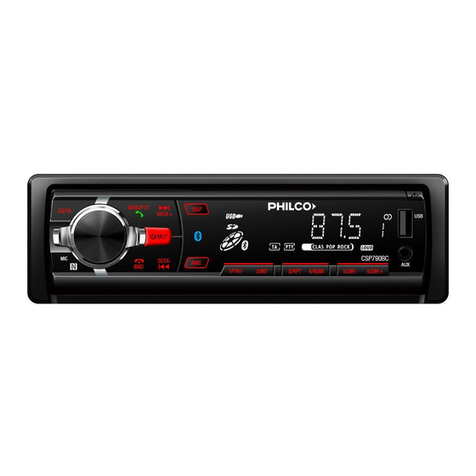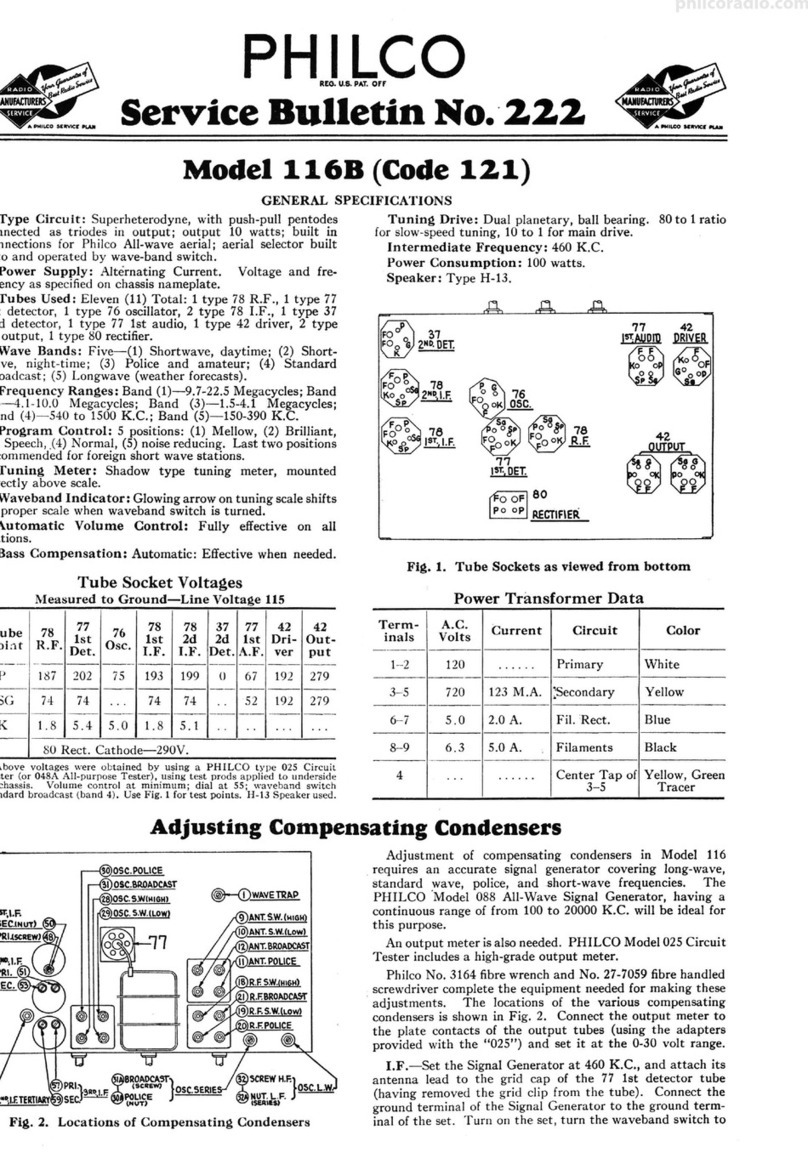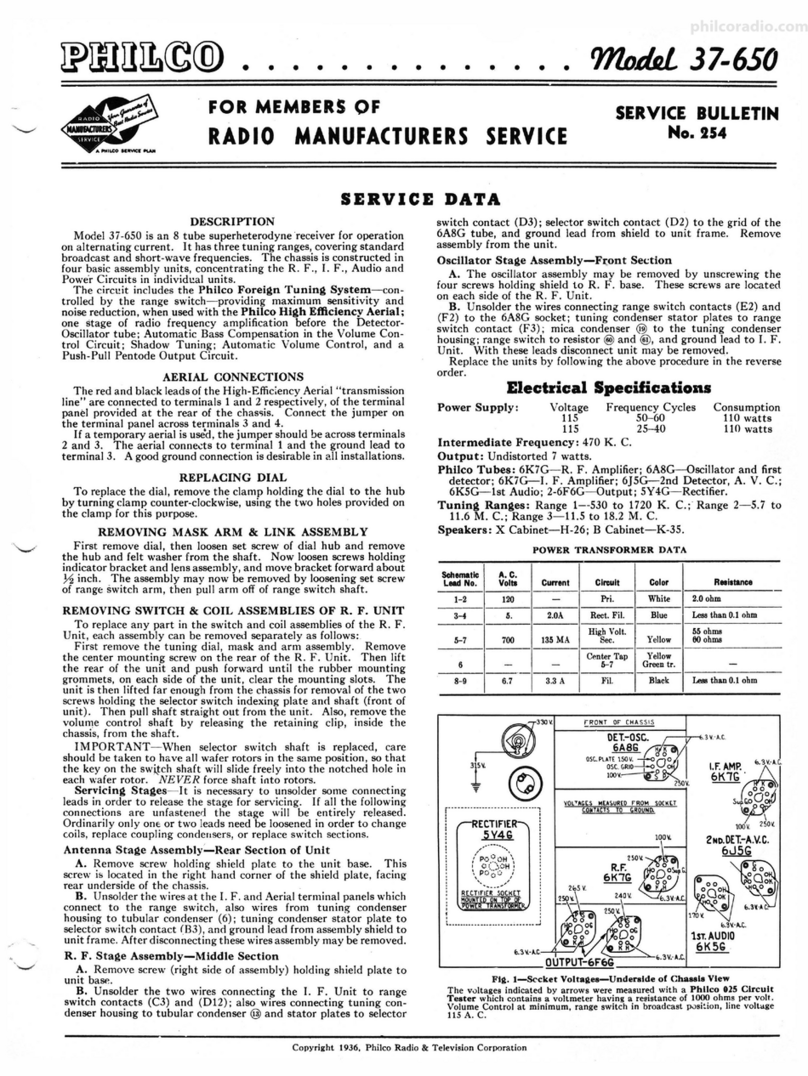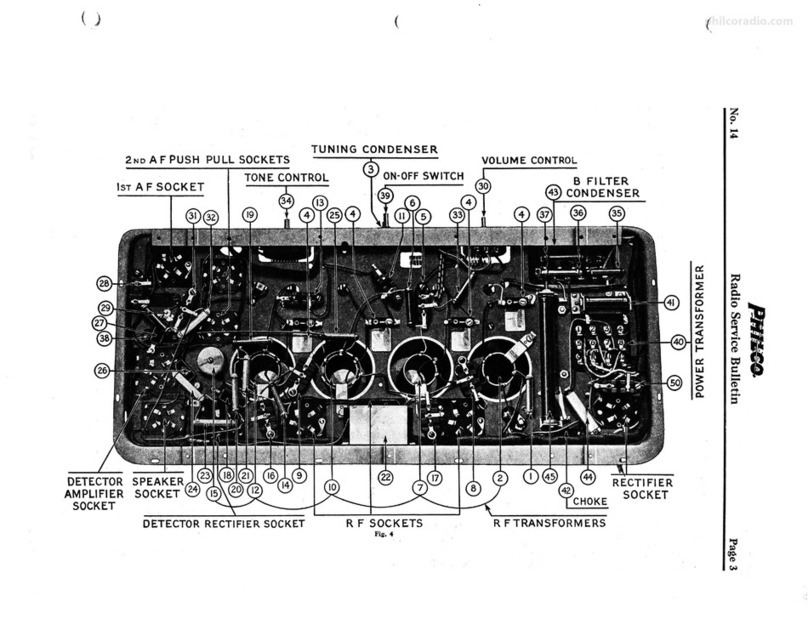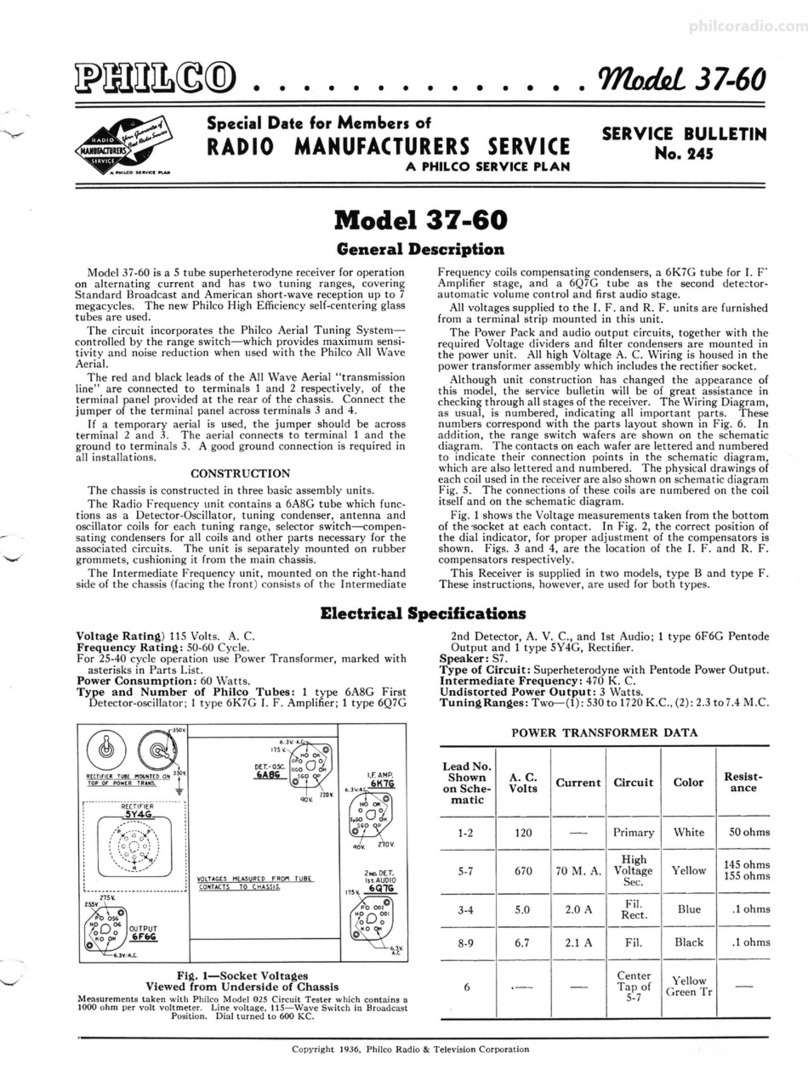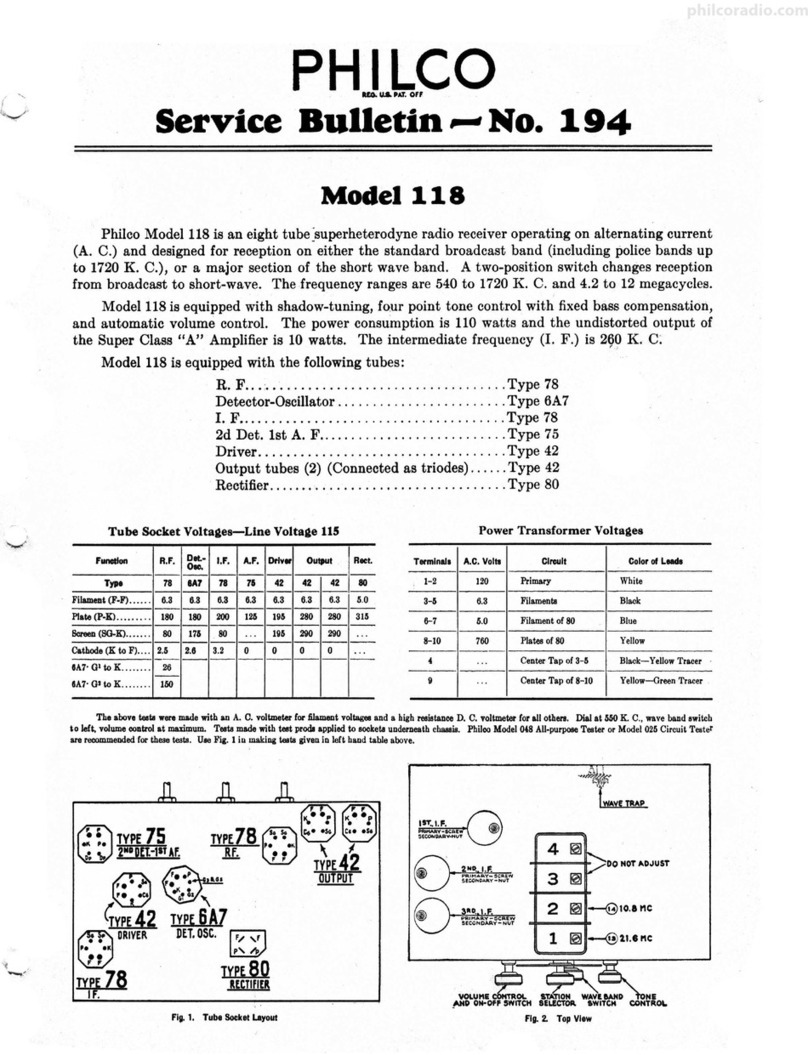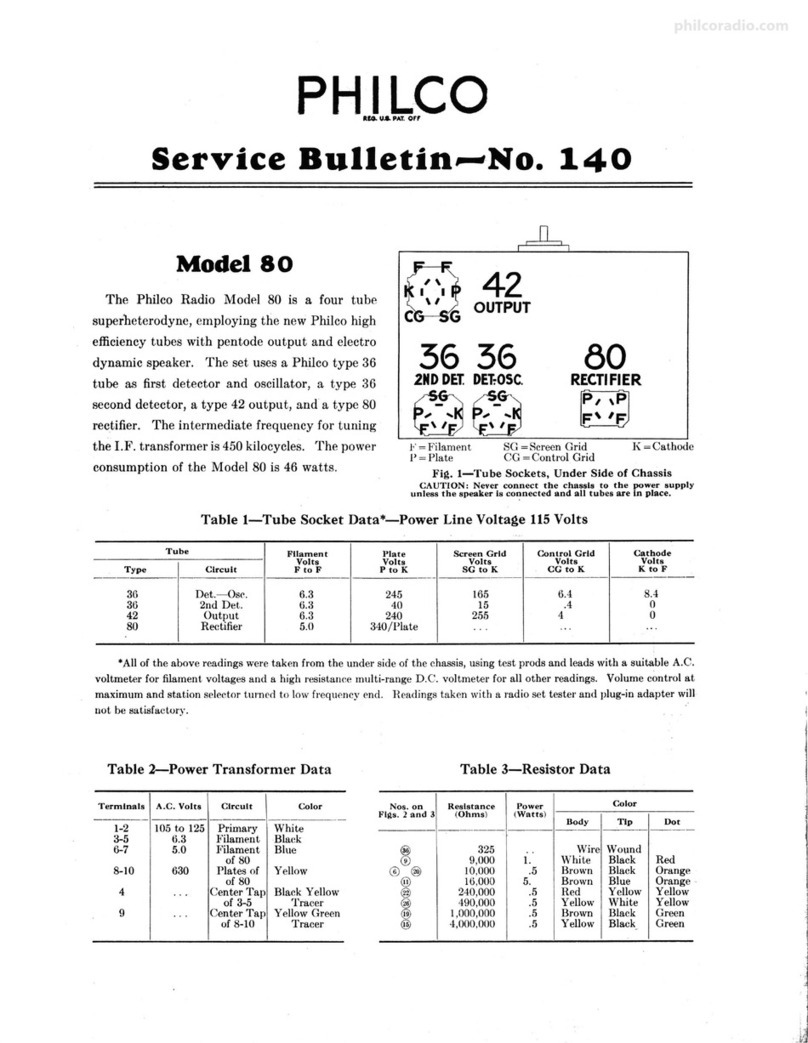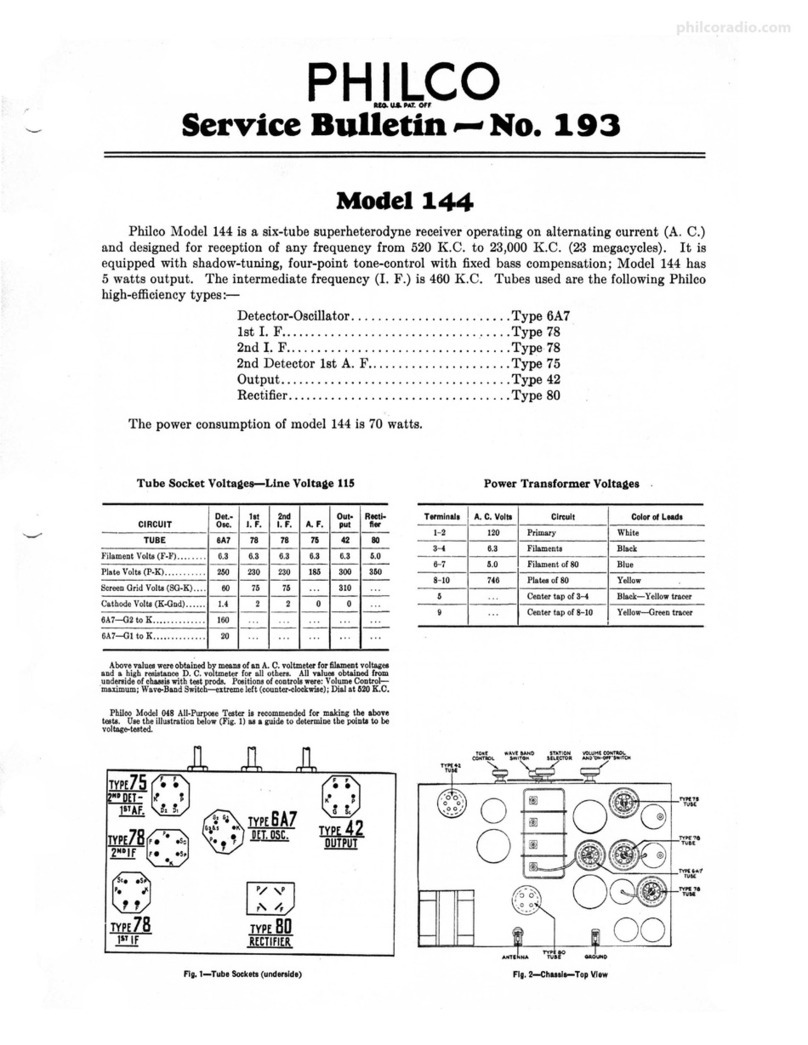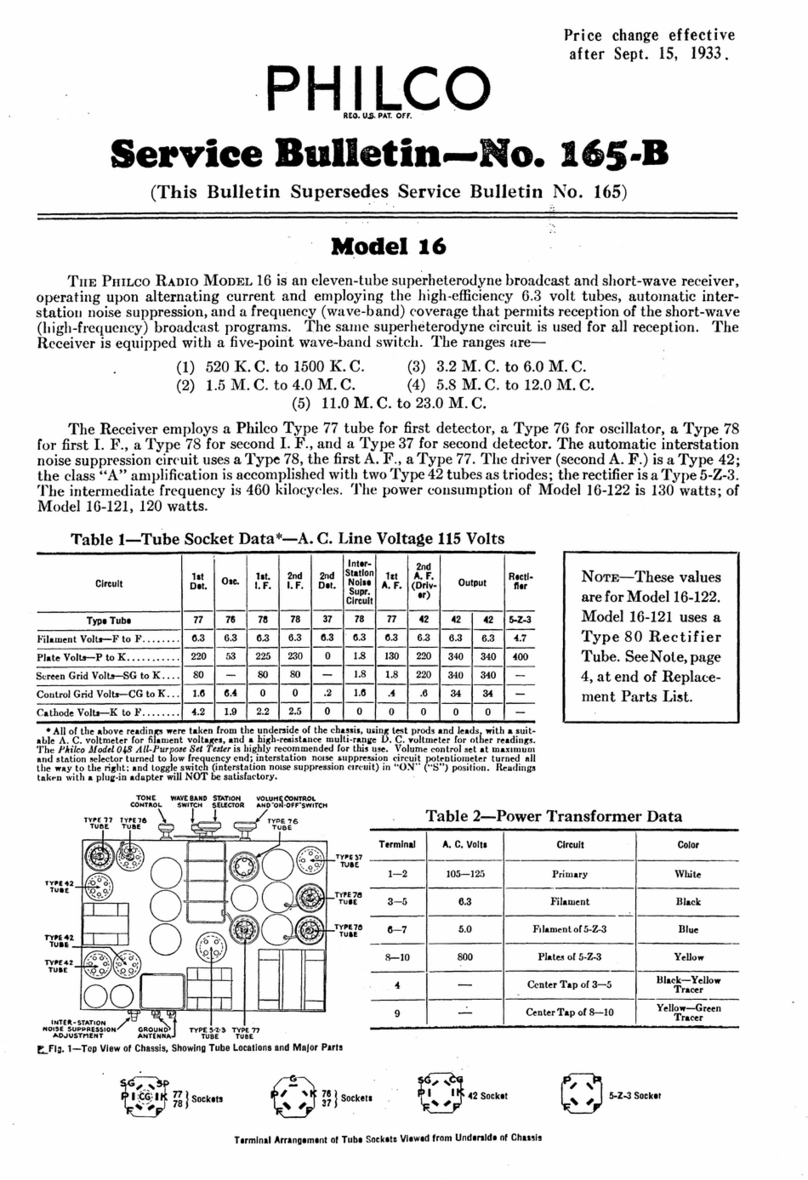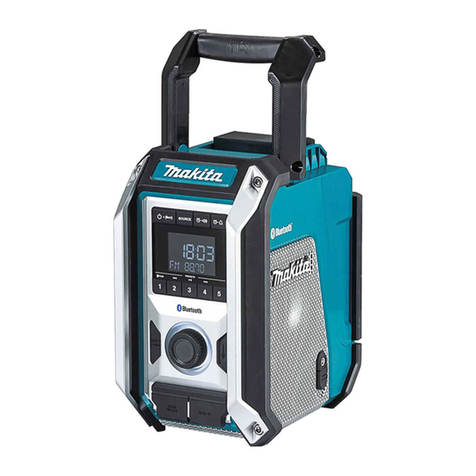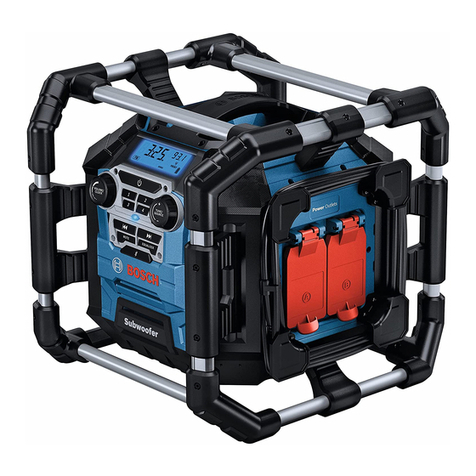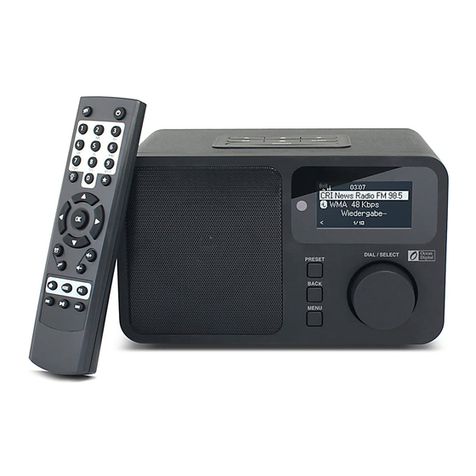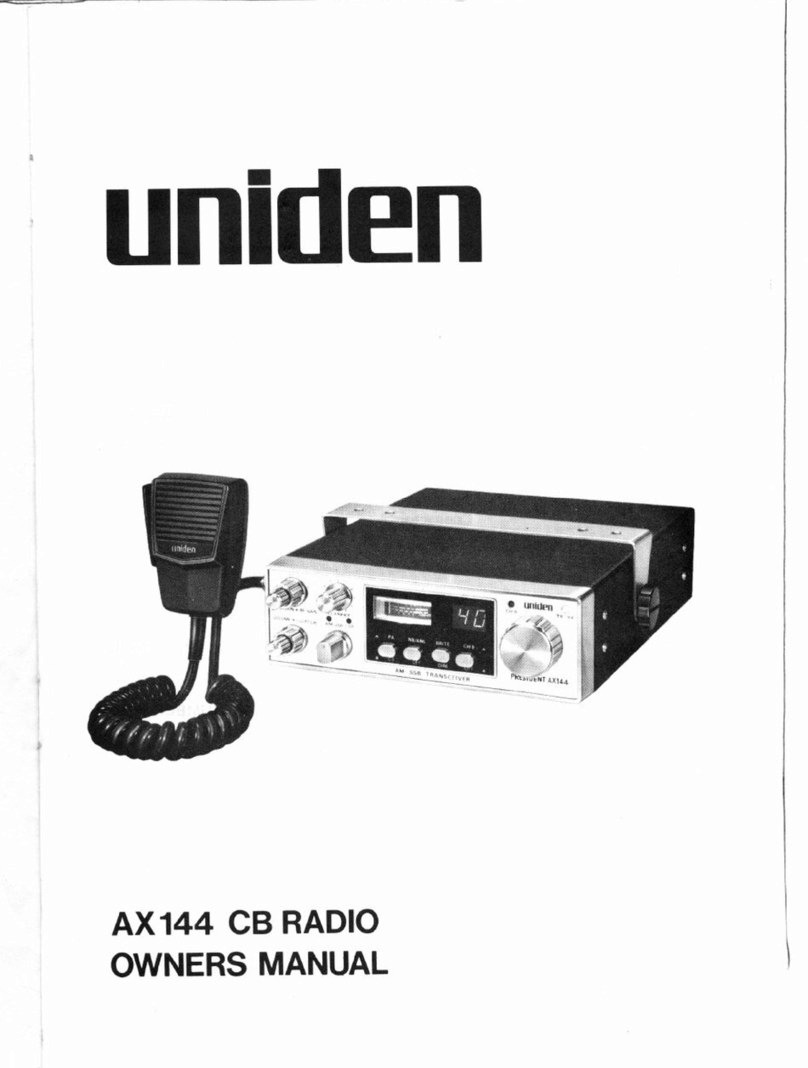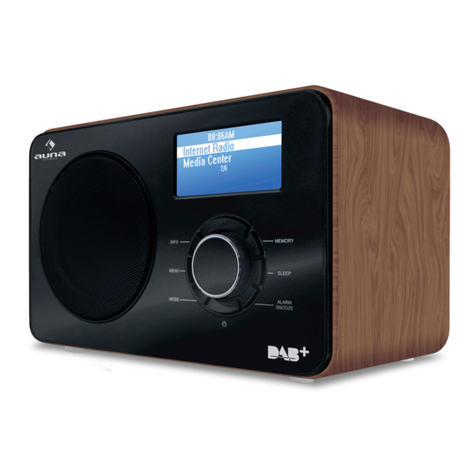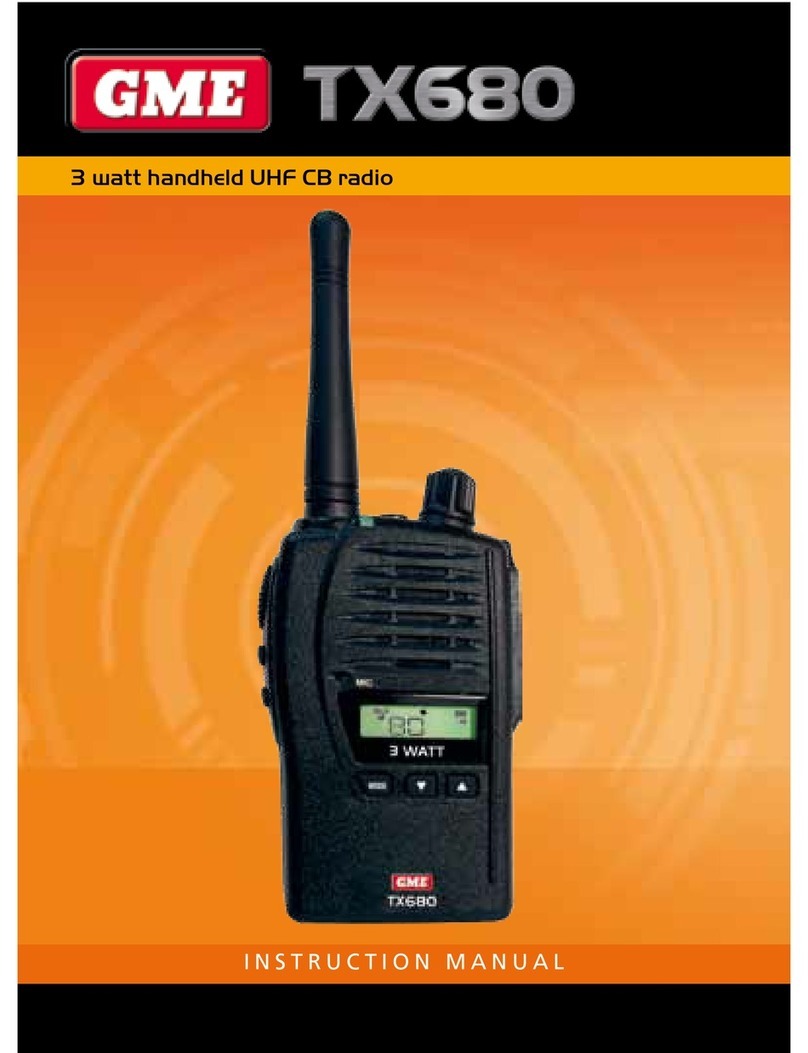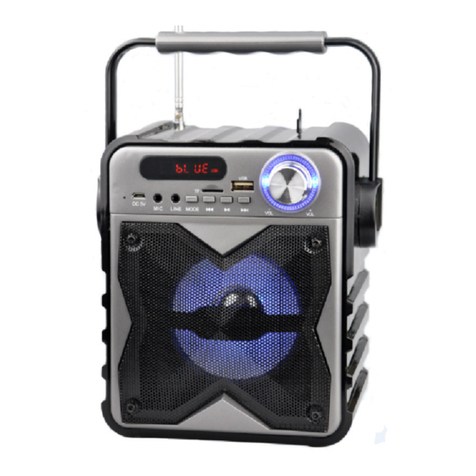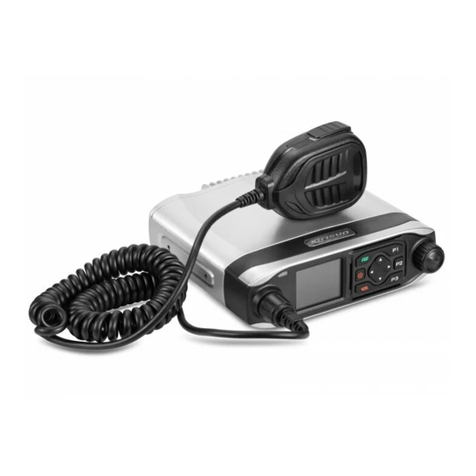
• • • •
SERVICE BULLETIN
No. 226
For Members of
RADIOMANUFACTURERS
SERVICE
A PHILCO SERVICE PLAN
Model 643
General Specifications
TYPE CIRCUIT: Superheterodyne, with Class "13"
output; built in connections for Philco All-wave aerial; aerial
selector huilt into and operated by wave-band switch.
POWER SUPPLY: Battery operated Model 643 uses a
2-rnlt storage battery (Philco 172-R). Model 643-A uses
dry A battery (Philco 41-8006). Both sets use a dry combina-
tion "B" and "C" battery unit (41-8061). This has a socket
into which the plug on the battery cable attached to chassis
is to be inserted.
TUBES USED: 1 type 34, pre-selector; 1 type 1C6, Detector-
Oscillator; 1 type 34, I. F.; 1 type 30, 2nd Detector and
A. \·. C.; 1 type 32, 1st A. F.; 1 type 30, driver; 1 type 19
output. Model 643-A has also a ballast tube, type lCl, to
maintain constant filament voltage on all tubes. The socket
for this tube exists in both 643 and 643-A chassis, but in the
former, the type lCl tube is not used, and the filament
contacts of the socket are shorted by a metal jumper.
WAVE BANDS: Four-(1) Longwave (U. S. weather
forecasts); (2) Standard; (3) Police; (4) Shortwave.
COVERAGE OF EACH BAND: Band 1, 150-390 K.C.;
Band 2, 540-1750 K.C.; Band 3, 1.75 to 5.8 megacycles;
Band 4, 5.8 to 18.0 megacycles.
TUNING DRIVE: Dual planetary, ball bearing, 80 to 1
ratio for slow speed tuning.
TONE CONTROL: 3-Position.
INTERMEDIATE FREQUENCY: 460 K.C.
CURRENT CONSUMPTION: "A" battery, .750 M.A.;
"B" battery, 22 l\l.A.
34
I .F.
6ALLAST FO O
I-C-18]'
(64)-.t.Ol'l\.'I') C,
Fig. 1. Tube Sockets as viewed from bottom
Adjusting Compensating Condensers
Adjustment of compensating condensers in Model 643
requires an accurate signal generator covering long-wave,
standard wave, police and short-wave frequencies. The
PHILCO Model 088 All-Wave Signal Generatcr, having
a continuous range of from 100 to 20000 K.C., is ideal for
this purpose.
An output meter is also needed. PHILCO Model 025
Circuit Tester includes a high grade output meter.
Fig. 2. Locations of Compensating Condensers
Philco No. 3164 fibre wrench and No. 27-7059 fibre-handled
screwdriver complete the equipment needed for making these
adjustments. The locations of the various compensating
condensers are shown in Fig. 2. Connect the output meter to
the plate and cathode contacts of the type 30 driver tube
(using the adapters provided with the "025") and set it at
the 0-30 volt range.
I.F.-Set the signal generator at 460 K.C. \\·ith attenuator
set at minimum, and attach its antenna lead to the grid cap
of the 34 I.F. amplifier tube (removing grid lead). Connect
ground lead to ground terminal on set or some part of chassis.
Set the dial at 55 and turn the waveband s,1·itch to position
2 (standard). Adjust the volume control of set to almost
maximum (just before oscillator hiss becomes noticeable),
and the 088 attenuator so that about one-fourth (¼) scale
reading is had on the output meter. With a fibre screwdriver
adjust condensers@ and@ (2nd I.F.) for maximum reading
on output meter. Turn attenuator of signal generator to
minimum and remove its antenna lead from the grid of the
34 I.F. tube, placing it on the grid of the 1C6. Adjust 088
attenuator as before then proceed to adjust condensers
@and@ (1st I.F.) for maximum reading. Then remove the
088 oscillator lead and replace grid connection. Care should
be taken to keep the output meter reading during adjustments
at about one-fourth scale reading. This should be done by
using the 088 attenuator control.
WA VE TRAP-Connect the Signal Generator antenna
and ground lrnds to the antenna and ground posts of the
set. With the signal generator operating at 460 K.C. and
the set controls adjusted as before for I.F. alignment, adjust
wavetrap (i) until a minimum reading is obtained in the
output meter.
SHORT WAVE~In adjusting the short wave or high
frequency band, the R.F. compensator will have a tendency
to "pull" or change the frequency of the oscillator. By
shunting a padding or variable condenser across the oscillator
section of the gang and tuning it so that the second harmonic,
(Continued on fourth Page)





